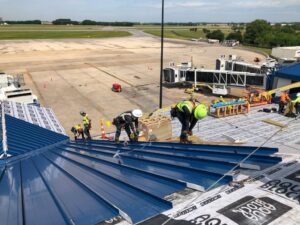Atlanta Braces for Potential Impact as Tropical Cyclone Nine Could Strengthen into Major Hurricane
The Southeast is on high alert as Potential Tropical Cyclone Nine threatens to become Tropical Storm Helene and potentially transform into a major hurricane in the next few days. This system is expected to impact the Florida Panhandle and travel through Georgia, potentially bringing significant weather disturbances to metro Atlanta by the week’s end.
Currently, the cluster of storms is located about 105 miles southwest of Grand Cayman, packing maximum sustained winds of 35 mph and moving north-northwest at 7 mph. With very warm sea temperatures fueling its progression, Helene could significantly strengthen as it treks toward the eastern Gulf of Mexico later this week.
“I want everyone to have a ‘plan B’ in mind, especially for Thursday and Friday,” noted a local meteorologist. “We’re in a daily, step-by-step situation, so more information will become available as the days progress, helping you better prepare.”
Preparing for the Storm
While the system is expected to weaken to a tropical storm as it approaches metro Atlanta, it is crucial for residents to remain weather aware and prepare for possibilities such as high winds, heavy rains, deadly lightning, and even potential tornadoes.
The potential impact window for the metro Atlanta area spans from Wednesday night through Saturday, with the timeframe of greatest concern being Thursday and Friday. However, forecast models will likely refine this prediction as the storm develops further.
What to Expect
Given the size and potential track of this system, several hazards pose risks for the region:
- Heavy Rainfall and Flash Flooding: Some models suggest rainfall totals up to six inches, with isolated areas potentially experiencing as much as 10 inches.
- Strong Winds: Gusty winds could down trees and power lines, resulting in scattered power outages.
- Isolated Tornadoes: Short-lived tornadoes may develop as the system moves inland.
It’s essential to remember that tropical systems can have widespread effects, with impacts felt far from the storm’s center. Don’t focus solely on the storm’s track; conditions can worsen in advance of its arrival.
“The potential for major hurricane strength exists, and while the exact landfall remains uncertain, areas in the Florida Panhandle and the west coast of Florida need to pay close attention,” a senior hurricane specialist said during an interview. “People need to remain on high alert as the storm progresses.”
Keeping Up with the Updates
Our local meteorologist emphasized the importance of monitoring the storm’s progression, noting that the track and intensity forecasts will become clearer each day. “The cone has now shifted back to the west,” they noted. “A western solution is our worst outcome, while an eastern solution would likely avoid the brunt of the storm’s greatest impacts.”
Helene is set to become the eighth named storm of the Atlantic hurricane season, which officially runs from June 1 to November 30. This year has seen record-warm ocean temperatures, leading experts to predict an above-average season with up to 25 named storms and as many as seven major hurricanes.
As the storm evolves, residents are urged to stay informed and prepare accordingly for any potential impacts. The next few days’ updates will be crucial in helping everyone remain safe and ready.







